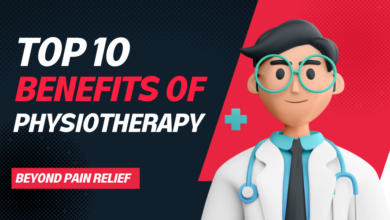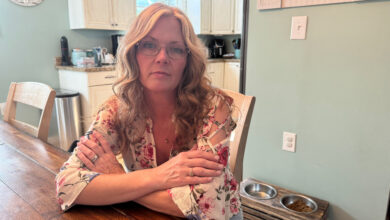
AURORA, Colo. — John Letson had seen too many apocalyptic movies to feel comfortable getting a covid-19 vaccine initially.
“I was completely against it,” the 40-year-old movie buff said, referencing “I Am Legend” and “Children of Men,” in which humanity is in jeopardy, as examples of what could go wrong. “I think an untested thing during a pandemic has later effects that we don’t know yet.”
After discussing with a doctor the various myths that have arisen about the vaccines, his opposition softened. On the way to get pizza in late June, he happened upon a mobile vaccination clinic behind a bus stop on Colfax Avenue in this Denver suburb and got his first dose.
“I was here. They were here,” he explained, as a nurse gave him a shot of the Pfizer-BioNTech vaccine.
The mobile clinic in the East Colfax neighborhood is part of a new push by Denver-area public health officials to find the neighborhoods where vaccinations lag behind state or county averages. Using detailed maps that show vaccines given by ZIP code or census tract, the health departments highlight underperforming areas being masked by a county’s overall vaccination rate. They then partner with community organizations with intimate knowledge of those neighborhoods to determine strategies to address the specific barriers keeping residents from being inoculated.
As the Biden administration seeks to boost the nation’s vaccine rate by going “neighborhood by neighborhood,” in the president’s words, the approach taken on Colfax Avenue could become a model for the rest of the country. According to the National Association of County and City Health Officials, such efforts depend on the accuracy of the data and the willingness of jurisdictions to work together, which can be difficult for some regions to accomplish. The Denver-area effort has managed to use granular data across seven counties to help raise the vaccination rate by an estimated 4 percentage points in one troubled Colfax area in about a month.
“We have to do the dirty work to be with the community and listen to what their actual concerns are,” Nicole Steffens, a program manager with the nonprofit Colorado Health Institute, said in a presentation on the mapping tool. “We can take all the data that we want based on large, mass groups of people on surveys with vaccine hesitancy or why people aren’t getting vaccinations, but that might not actually apply to that very specific location.”
The public health agencies cooperating in the Denver region represent 3 million Coloradans, about 60% of the state’s population. They overlay data from the state vaccine database with the covid caseload, poverty rates and racial demographics to highlight areas of concern.
“We weren’t very surprised to see the areas that lit up,” said Meghan Prentiss, with the Tri-County Health Department, which serves Adams, Arapahoe and Douglas counties east and south of Denver. “They all kind of followed those common trends of other health indicators.”
East Colfax topped the department’s priority list. The neighborhood, which spans the border between Denver and Aurora, is one of the more impoverished in the metro area, with large numbers of immigrants and minorities, many of whom speak neither English nor Spanish.
Two-thirds of the city of Denver’s eligible residents were fully vaccinated by the end of June, compared with just above 30% in the East Colfax neighborhood. In the 80010 and 80011 ZIP codes, which include the Colfax corridor, fewer than half of those ages 30 to 39 were vaccinated, compared with more than 75% in more affluent Washington Park or City Park.
Part of the problem, people in the community told health officials, was transportation.

Initially, the state had set up mass vaccination clinics in the center of Denver. But many East Colfax residents have no car, relying primarily on public transit. It’s about a 50-minute ride one way on the Route 15 bus to the Ball Arena vaccine site. For many, that was too far to venture.
“It looks great on TV to have these mass clinics where people drive through,” said Judy Shlay, an associate director who runs the immunization program for Denver Public Health, which operates the mobile vaccine clinic. “But we have to be more agile and flexible for people who are maybe more hesitant to go downtown, or because they have to take three buses to get there.”
Moreover, people in the East Colfax area often work hourly jobs as independent contractors or gig workers and get no time off to get vaccinated. And if they fall ill after getting vaccinated, they might miss another day’s pay.
So public health officials worked with transit authorities to identify where high-ridership bus lines intersected in the corridor, settling on a location by a Walmart, a Sprouts grocery store and the Little Caesars restaurant where Letson had gone to buy pizza.
On two days in late June, the mobile clinic vaccinated a total of 150 people, most receiving their first shots. Among them was Marley Sosa, 18, whose sister is a nurse who worked at the clinic.
“She made me feel safe about it,” he said. “People are just hesitant because it’s a new vaccine.”
Ira Milhouse, 40, who is homeless, said he got vaccinated so he could receive a $50 grocery gift card provided as an incentive. Stephanie Aguilar, 18, came after clinic staffers walked through the shopping plaza where the van was parked, informing everyone they could get vaccinated that day.

Others inquired about the incentives but walked away unvaccinated.
Janice Robinson, 53, had come to the bus stop, part of her daily routine of “taking a ride” with no particular destination. “I don’t want the vaccine,” she said. “I don’t think I need it. I don’t really go anywhere.”
Desiree Mister, 45, had just finished a shift at Sprouts. She was tired of wearing a mask and wanted to get vaccinated. But she wasn’t sure if she could sell her plasma if she got vaccinated. She decided she’d come back the following week after a plasma draw. (The Food and Drug Administration says people who have received covid vaccines can continue to donate blood or sell plasma without a waiting period, although rules at plasma collection sites can vary.)
Early data, Shlay said, showed that vaccine access was highly correlated with income, and those able to connect digitally had an easier time tracking down shots. It proved much more difficult for East Colfax residents with language barriers.
That meant the vaccine had to come to East Colfax, which has few police or fire stations, libraries or rec centers that could host vaccine clinics. “We couldn’t anchor something in there,” Shlay said. “So we had to use small organizations that maybe aren’t reaching everybody.”
One of those was the Village Exchange Center, a nonprofit just a block off Colfax Avenue. The center offers benefits to immigrants, including a food bank that serves 4,000 people a day. Workers there inserted flyers about the vaccines into the bags of food they distributed and held information sessions.
“We have several pastors that have just said, ‘This is evil, and we’re not going to do it,’” said Amanda Blaurock, the center’s executive director. “And we respect that. We don’t go around decisions that community members have made. We just say, ‘We’re hosting it, and if you want it, we’re trying to make it as accessible as possible.’”
One census tract in the area has a recorded population of 4,389, and as of mid-June, slightly more than 1,300, or about 30%, were fully vaccinated. Health officials would need to get roughly 1,700 more vaccinated to reach their 70% goal. A month later, the rate had climbed to 34%, and health officials expect more dramatic gains in the coming weeks after people receive their second doses.
The initial success has buoyed interest in more transit-based vaccine clinics. Shontel Lewis, who represents the East Colfax area on the Regional Transportation District mass transit agency’s board of directors and spearheaded its involvement, said future clinics might be held at park-and-ride locations and other bus stops in underserved areas.
“The approach is often cookie-cutter. We tend to go with the same strategies, and then, when no one comes, we just throw our hands up,” Lewis said.
If the goal is to get everybody vaccinated, she said, the interventions need to be tailored to specific communities. “Our approach might be different,” she said, “but our goal is the same.”

KHN (Kaiser Health News) is a national newsroom that produces in-depth journalism about health issues. Together with Policy Analysis and Polling, KHN is one of the three major operating programs at KFF (Kaiser Family Foundation). KFF is an endowed nonprofit organization providing information on health issues to the nation.
USE OUR CONTENT
This story can be republished for free (details).


